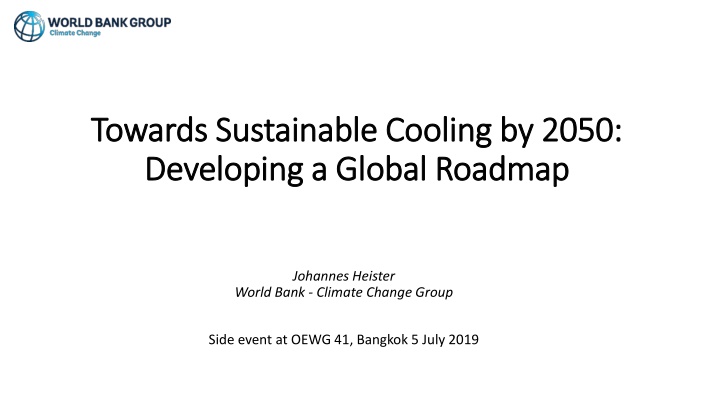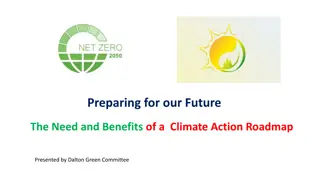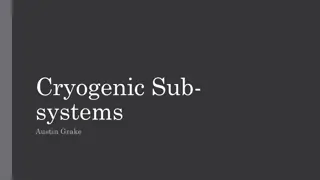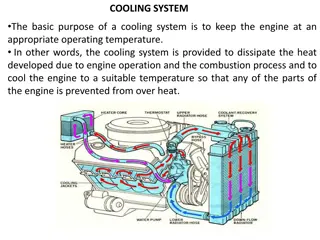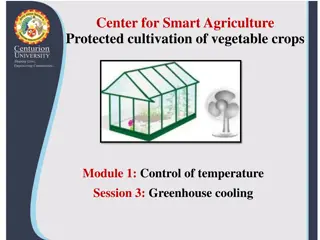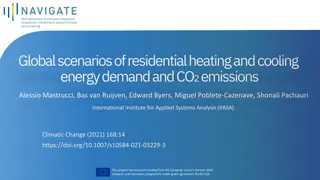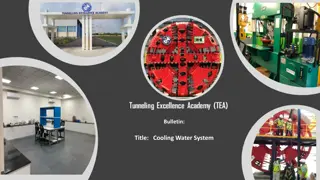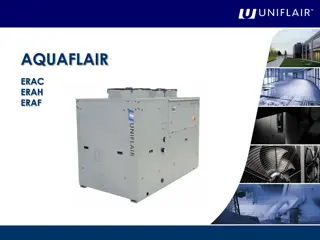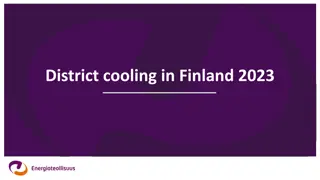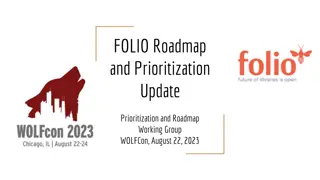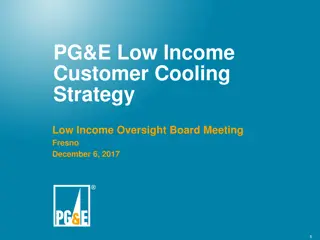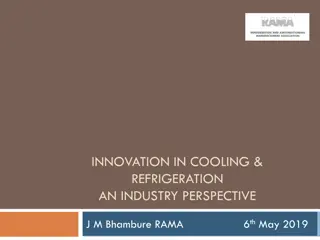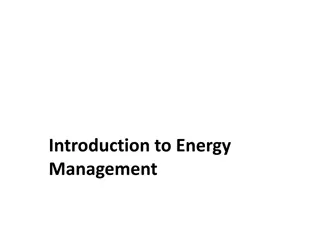Sustainable Cooling by 2050: Global Roadmap Development
Cooling is crucial for development & environment. Paradigm shift needed for sustainable cooling to mitigate climate impact & achieve SDGs. Key actors to align efforts.
Download Presentation

Please find below an Image/Link to download the presentation.
The content on the website is provided AS IS for your information and personal use only. It may not be sold, licensed, or shared on other websites without obtaining consent from the author.If you encounter any issues during the download, it is possible that the publisher has removed the file from their server.
You are allowed to download the files provided on this website for personal or commercial use, subject to the condition that they are used lawfully. All files are the property of their respective owners.
The content on the website is provided AS IS for your information and personal use only. It may not be sold, licensed, or shared on other websites without obtaining consent from the author.
E N D
Presentation Transcript
Towards Sustainable Cooling by 2050: Towards Sustainable Cooling by 2050: Developing a Global Roadmap Developing a Global Roadmap Johannes Heister World Bank - Climate Change Group Side event at OEWG 41, Bangkok 5 July 2019
Key messages Key messages Cooling has become a development and environmental imperative, which requires new thinking and a paradigm shift. Concerted action on cooling in all sectors is needed to achieve mitigation and adaptation outcomes in line with the Paris Agreement, and advance the sustainable development goals. Key actors governments, cooling industry, financiers need to read from the same strategic roadmap to move towards sustainable cooling.
Why is a paradigm shift necessary to get on track? Why is a paradigm shift necessary to get on track? Development at risk 1.1 billion at risk of heat stress without access to cooling Up to 50% of foods lost post harvest, over 1.5 million vaccine preventable death each year. By 2050, up to 6% of GDP lost yearly due to heat and impact on labor productivity Energy supply at risk 19 pieces of cooling equipment added every second for the next 30 years. Power generation capacity for new room ACs (100GW) exceeded new solar PV capacity (2017). The cooling load will be 30-50% of peak electricity load in many countries. Additional capacity of 2,500 GW is needed to meet cooling load by 2050 (~US $1.7 trillion). Paris at risk Conventional cooling accounts for as much as 10% of global GHG emissions, and growing. Refrigerants make up 20 30% of AC climate impact; 70 80% is from electricity. Globally, cooling emissions are expected to double by 2030 and triple by 2100. We must expand cooling while dramatically reducing GHG emissions from cooling.
Warming Trends and Phase Warming Trends and Phase- -down Plans down Plans
Sustainable cooling means Sustainable cooling means Any human activity, design or technology that dissipates or reduces temperatures and contributes to achieving reasonable thermal comfort for people, or preservation of products and produce (medicines, food, etc), or effective and efficient processes (data centers, industrial, agricultural production). Sustainable cooling means cooling with minimal climate impact and environmental damage, in line with the objectives of the Paris Agreement on Climate Change, and which delivers economic and social benefits whilst reducing resource depletion, and leaving a positive legacy for future generations. Measures that reduce the demand for artificial cooling (e.g. behavioral change, insulation, building design) are included in this definition.
World Bank Sustainable Cooling Initiative World Bank Sustainable Cooling Initiative Objective: To catalyze global action by public and private agents in support of affordable and sustainable cooling for all in developing countries. Engagement: Bring stakeholder together around a new understanding of cooling. Roadmap: Develop a plan to put cooling on a sustainable path by 2050. Action: Unlock new financing solutions and take concerted actions now. Scope: shifting from ... a focus on refrigerant emissions: --> energy use is the main driver. a focus on appliances: --> management of cooling systems is needed. the dominance of the vapor compression cycle: --> technology innovation is an imperative. a fragmentation of the policy responses: --> make cooling a part of infrastructure. a focus on space cooling: --> cold chain is key to meeting the SDGs.
Why is a global roadmap for cooling needed? Why is a global roadmap for cooling needed? Isolated efforts are unlikely to meet needs and produce results finding synergies. Cooling cuts across many sectors and user communities. The sustainable cooling roadmap is an integrated and prioritized strategy, based on an analysis of 5 cooling user groups, where actors come together at agreed junctions to deliver identified solutions. It is necessary to better understand: the cooling-related services that different user groups require (needs assessment), the technologies and business options to meet these needs (not simply cooling), the regulatory drivers that can help match needs and solutions, the key actors (businesses, governments, financiers ) that will need to cooperate, the targets and timelines to make cooling sustainable.
Adaptation GHG mitigation HFC Phase-down Sustainable Development Technology Policy Finance
Working on the Roadmap Block 1 Roadmap context The cooling eco-system and data to drive the analysis in Block 2 2.5 2.1 2.2 2.3 2.4 Existing buildings New urban development Industry and large commercial Transport and logistics Rural , health cold chain 2.6 System level integration across user communities Block 3 Roadmap strategy and prioritization
What are we learning? What are we learning? Better cooling technologies exist already (efficient AC units, zero GHG refrigerants, district cooling systems, passive measures, heat informed city planning - but they are not sufficiently deployed - and they are not enough It takes time to have the technologies ready that we need in 10, 20 or 30 years. R&D spending and innovation in the cooling industry needs to be higher The Global Cooling Prize is demonstrating this challenge: 5 x lower total GHG emissions Cooling systems (not AC units) needed to manage future cooling loads, electricity demand. Cooling systems need to be understood as infrastructure, interconnected with other networks. Thinking thermally will help balance loads and make use of low grade thermal energy. New business models are required to deliver and maintain cooling services. Data-driven, systems management technology can be disruptive for the cooling sectors, too. Cooling can be a future growth industry, with new jobs, if done right.
What else are we learning? What else are we learning? There may be a case for regulatory intervention to - encourage faster innovation in cooling, - promote deployment of much higher energy efficiency in cooling, - ensure that cooling systems are planned and integrated with other systems, - deliver cooling services to underserved populations (efficient cold chain). Sustainable cooling can contribute to the financing needed. - Businesses and people are willing to pay for better food, greater comfort, more productive work environments ... if the services and payment systems are set up properly. - But this may not be enough to develop cooling systems and ensure access to cooling for rural populations. - Some public or cooperative funding may be needed, perhaps as part of a public-private collaboration arrangement.
Anatomy of the Roadmap Anatomy of the Roadmap Needs and demand for cooling Goals and timelines Principles of sustainable cooling Solutions and actions Technology approaches Policy options Business models Financing and funding User Group Analysis Priorities and strategies Commitments for action Roadmap implementation
A Coalition for Action? A Coalition for Action? Key players governments, cooling industry, financiers need to read from the same roadmap to move towards sustainable cooling. Governments, regulators, city administrators need to enhance planning and incentives for better cooling solutions e.g. through MEPS, bulk procurement, building codes, HFC phase down, product bans, financial incentives to bring down (fossil) energy use and GHG emissions from cooling. Cooling manufacturers, businesses need to act responsibly and invest in sustainable technology and innovation, support new business and service models (e.g. data connectivity, cooling as a service) and professionalize delivery of cooling services. Externalizing the environmental costs of cooling is no longer a sustainable business. Development organizations and financiers need to help expand access to cooling for greater health, productivity and (rural) income but only if we get well managed and sustainable solutions in place.
Towards Sustainable Cooling by 2050: Towards Sustainable Cooling by 2050: Developing a Global Roadmap Developing a Global Roadmap Johannes Heister World Bank - Climate Change Group Side event at OEWG 41, Bangkok 5 July 2019
